DOWN THE GARDEN PATH

The classic image of a suburban home is incomplete without that perfectly square parcel of green lawn bordered by a white picket fence. Such a well-manicured lawn required its owners to invest in its care. In Levittown, there were strict rules about how to keep one’s lawn. New homeowners were given pamphlets and flyers about the importance of maintaining a perfect lawn, with plenty of tips for how to keep it lush, green, and healthy. Unlike in Europe, where lawns were bound behind high hedges, American lawns were supposed to be open and friendly, a place to convene with family and friends.
Many companies saw this space as a ripe opportunity, and launched new lines of products for its cultivation. In 1953, manufacturing company Briggs & Stratton created the light-weight aluminum engine for mowers; just four years later it represented 80 percent of the engines the company shipped in the United States.
“No feature of a suburban residential community contributes as much to the charm and beauty of the individual home and locality as well-kept lawns.”
—ABE LEVITT, in a newsletter to Levittown homeowners
In 1957, Radio Steel introduced a line of garden carts to help out with lawn care in the nation’s fast-growing suburbs. A letter to wholesale buyers in October 1957 announced: “The race for ranch homes—has created an unprecedented market for lawn and garden needs. Matter of fact, our forefathers ran whole farms with a lot less equipment than the modern man needs to run a lawn . . . So it is with high excitement that we proudly announce the sensational new Model #75 Radio Line Garden Cart!”
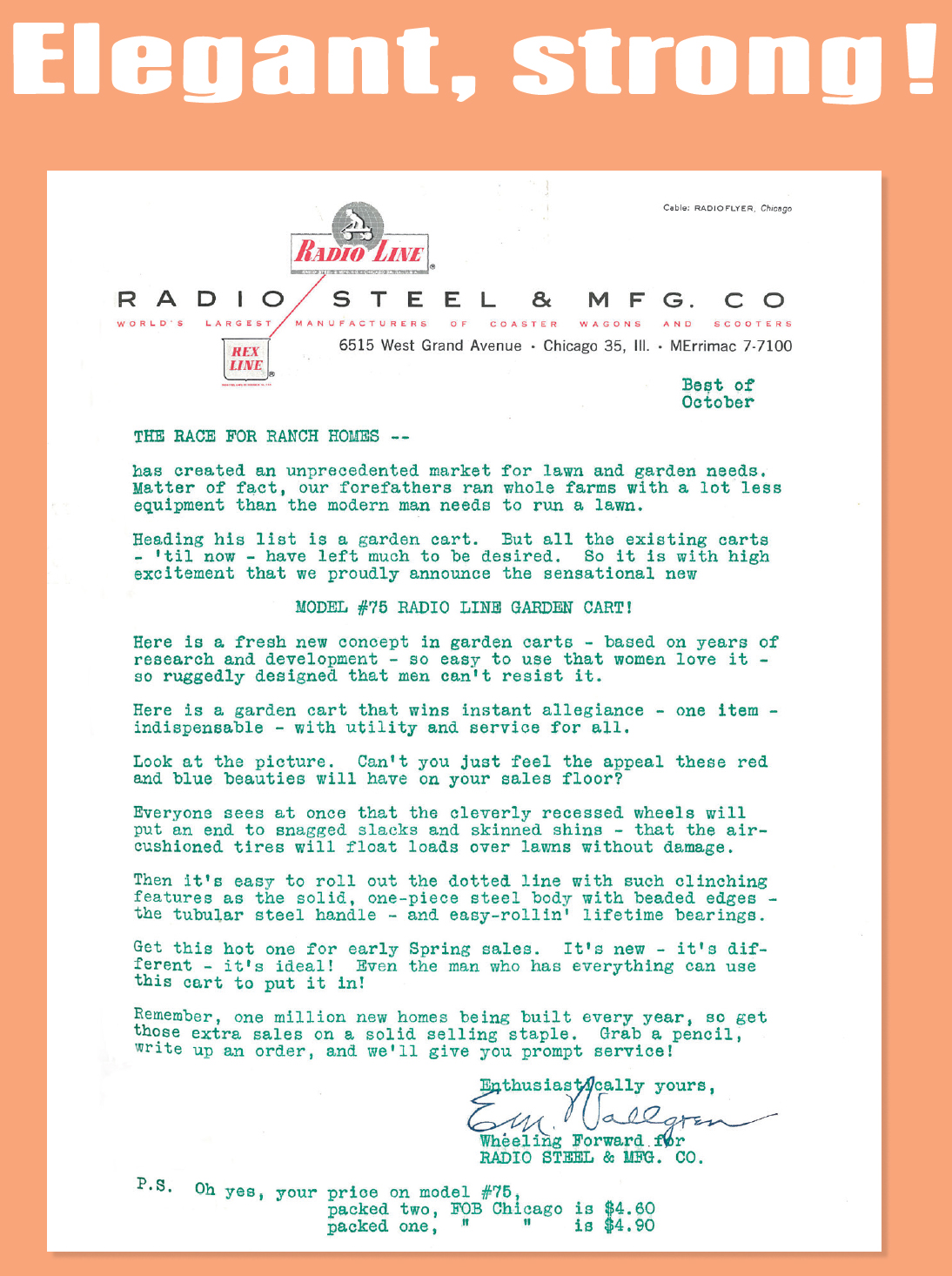
Letter to wholesale buyers announcing the newest addition to the Radio Line: a Garden Cart wheelbarrow, inspired by the “race for ranch homes.”
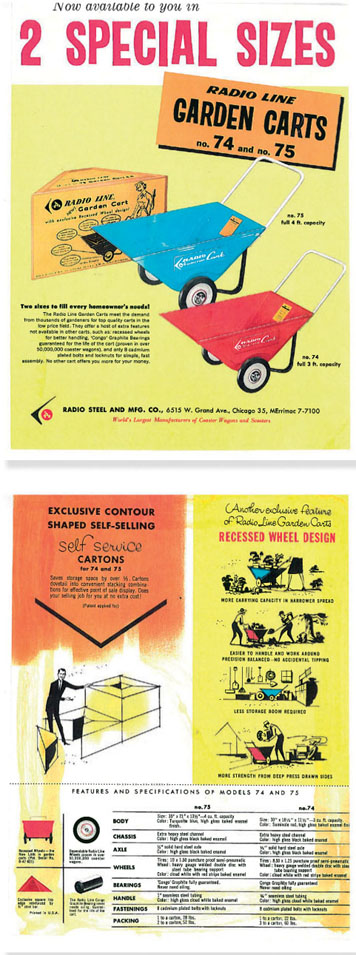
Advertisements for Radio Steel’s new line of Garden Carts placed in wholesale catalogs.
Antonio’s son, Mario, a fresh graduate of the University of Notre Dame, collaborated closely with his father on the development of the Garden Cart. The model featured a large body with a low center of gravity and four-cubic-foot capacity, special 9½ by 1½–inch Radio Line wheels with extra cushioning, and the signature Radio Line Congo graphite bearings. This design made it easier to carry a larger load in a smaller area—its heavy steel construction and baked enamel finish also added to its durability.
The patented design allowed for the carts to be stacked when fully assembled, which made for impactful point-of-purchase displays at all of the new suburban Sears stores. The packaging was also new for the garden department. Whereas previously wheelbarrows were sold in parts at hardware stores and then had to be assembled, Radio Steel’s Garden Cart contained all parts in a single package with graphics and feature callouts, making it easy for any suburbanite to pick one up at the local mall.
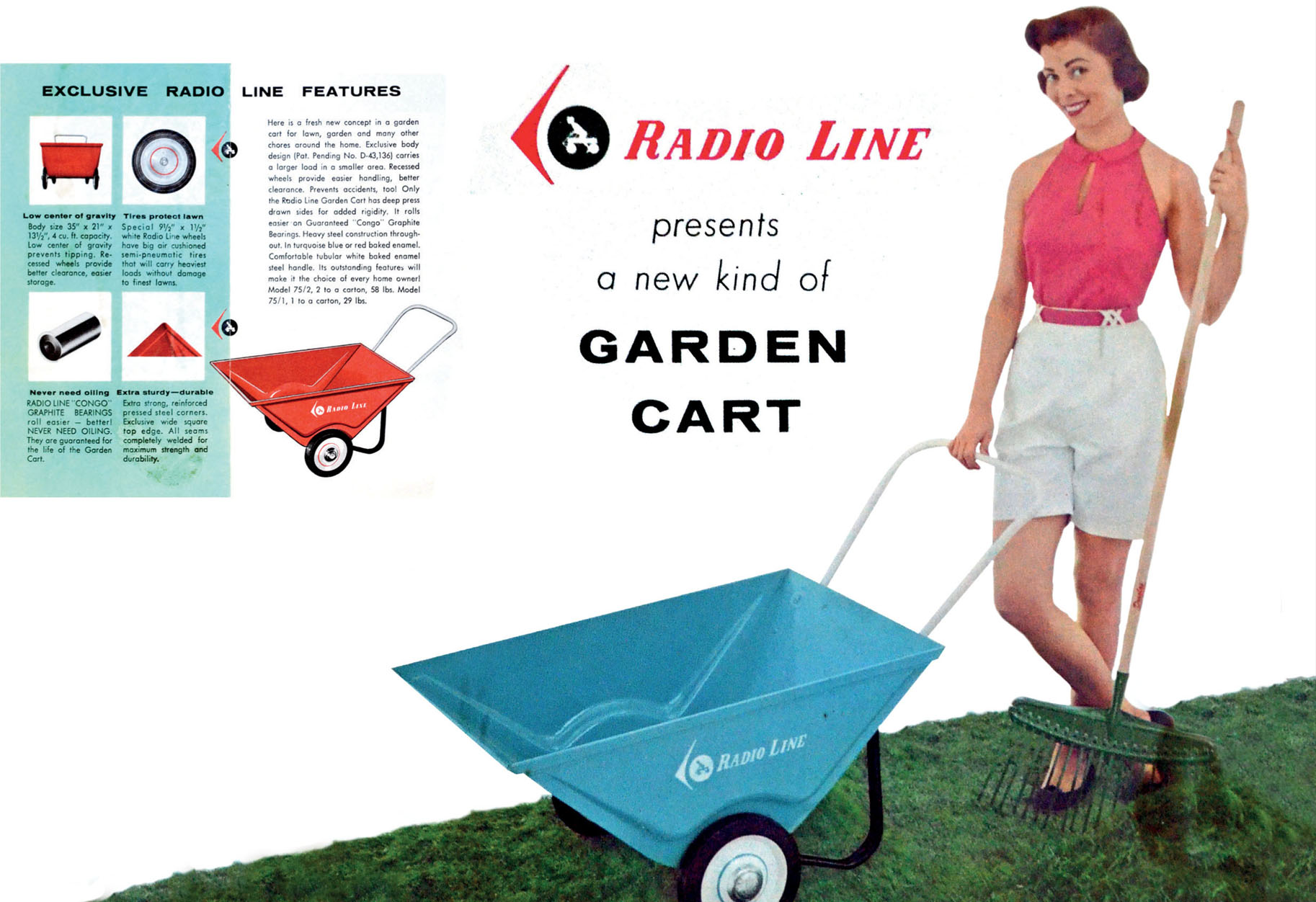
Unlike other wheelbarrows on the market, Radio Steel’s Garden Cart was designed in a smaller size with two wheels instead of one. This made it more stable and easier to move—and especially attractive to women.
A CENTURY OF SMILES
RADIO FLYER STORIES
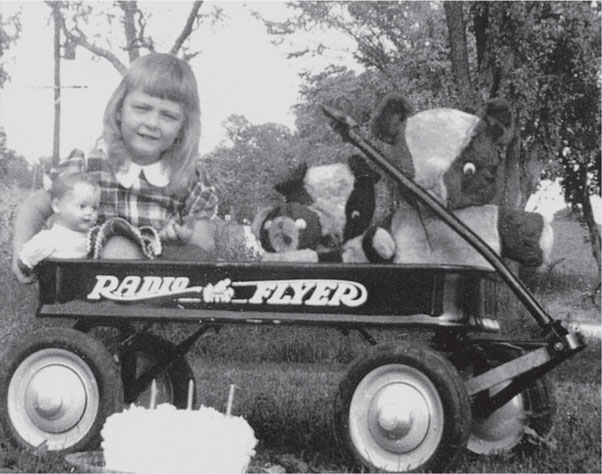
Courtesy of Barbara Dawn Meyer
This photo was taken September 19, 1950. We lived in a small rural town in Wisconsin, and money was scarce, to say the least. That year, my father made several sacrifices to see that I had a Radio Flyer wagon for my birthday. I loved it, and used it for hauling teddy bears, baby chicks, kittens, and puppies. Later, I used it to haul hay bales to feed thirty head of cattle. I left home in 1965, and left my beloved Radio Flyer wagon to be handed down to my younger sister and brother.
—BARBARA DAWN M. Morton Grove, IL
During 1953, while my husband served in the U.S. Army, I clerked at our neighborhood grocery. The storekeeper allowed me to bring my youngster with me, and my mother picked him up at noon. Little Kevin loved his daily ride in Grandma’s Radio Flyer, but on the way home one day, she heard some pitiful whimpering behind her. When she looked back, her precious grandson was on the sidewalk—he had tumbled out when the wheel hit a crack! Grandma lovingly cuddled him, but he wasn’t pacified until she placed him back in the wagon to ride some more.
—PATRICIA L. • Pinellas Park, FL
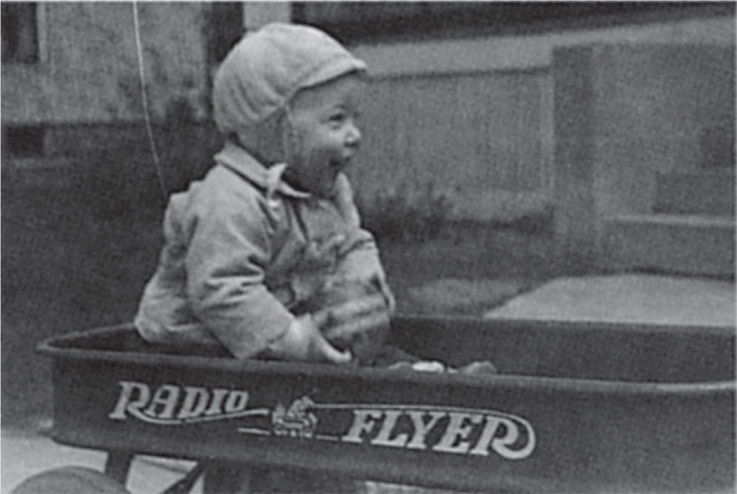
Courtesy of Patricia Lampariello